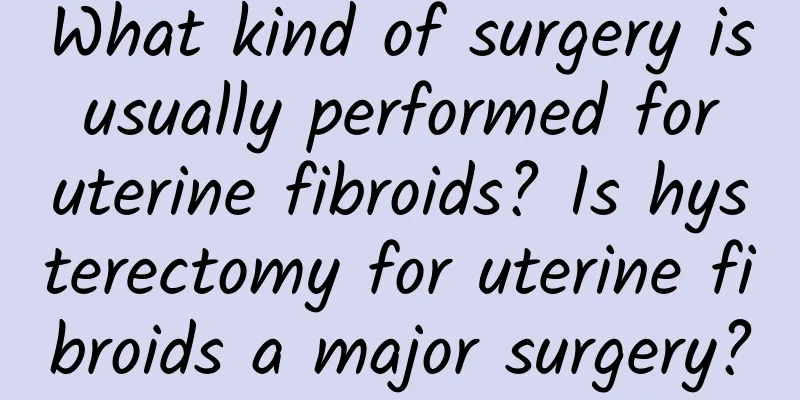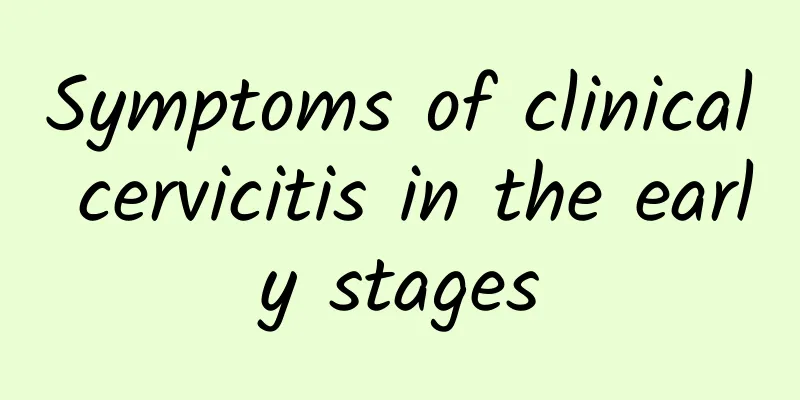What kind of surgery is usually performed for uterine fibroids? Is hysterectomy for uterine fibroids a major surgery?

|
What kind of surgery is usually performed for uterine fibroids? Is hysterectomy for uterine fibroids a major surgery? Introduction: It is important for patients to understand the types of surgery for uterine fibroids to ensure that they receive the most appropriate treatment. This article will introduce the common types of surgery for uterine fibroids and the nature and risks of hysterectomy. Types of Uterine Fibroid Surgery Uterine fibroids are one of the most common tumors in the female reproductive organs, and many patients require surgery to treat them. Types of surgery for uterine fibroids include medical therapy, conservative surgery, and resection. Medical therapy can be used to control symptoms and relieve pain, but it cannot completely cure fibroids. When medical therapy is ineffective or the condition is severe, conservative surgery and resection are usually the treatment options. 2. Applicability of conservative surgery Conservative surgery is a minimally invasive procedure to remove uterine fibroids using laparoscopic or hysteroscopic techniques. Laparoscopic surgery involves inserting a camera and surgical tools into the abdominal cavity through a small incision in the abdomen. Hysteroscopic surgery involves inserting a camera and surgical tools into the uterine cavity. Conservative surgery is a good option for women who wish to preserve their uterus and fertility. The necessity of hysterectomy However, not all uterine fibroids are suitable for conservative surgery. In some cases, the fibroids may be too large or too numerous to be removed with conservative surgery. At this point, a hysterectomy becomes a necessary option. A hysterectomy is a surgical procedure to completely remove the uterus, either through an open abdomen or laparoscopy, and is often used to treat conditions such as severe uterine fibroids, endometriosis, and uterine cancer. A hysterectomy is a major surgery that involves deep manipulation of the pelvis and pelvic organs. 4. Risks and precautions of hysterectomy Hysterectomy is a relatively complex surgery, and patients need to fully understand the risks and precautions of the surgery. Surgical risks may include postoperative pain, blood loss, infection, and incision healing problems. Complications such as urinary incontinence, sexual dysfunction, and osteoporosis may also occur after surgery. Before the operation, the doctor will conduct a comprehensive evaluation and examination of the patient to determine the suitability and prognosis of the operation. The choice of surgery for uterine fibroids should be made on an individual basis. Conservative surgery is suitable for patients who wish to preserve their uterus and fertility, while hysterectomy is suitable for patients with large or excessive uterine fibroids. However, no matter which surgery is chosen, patients should fully understand the risks and precautions of the surgery and actively communicate with their doctors. I hope this article can provide some useful information for patients who are concerned about uterine fibroid surgery. |
>>: Why do fibroids grow outside the uterus? What causes fibroids outside the uterus?
Recommend
Middle-aged women should be most careful about uterine fibroids
One of the diseases that often occurs in middle-a...
What is the last menstrual period?
What is the last menstrual period? This question ...
Treatment options for adenomyosis
Adenomyosis is a common gynecological disease. It...
Experts introduce common sense of care for vulvar leukoplakia
Patients with vulvar leukoplakia must do a good j...
Two important treatments for ectopic pregnancy
It is very important for patients to treat ectopi...
What are the early symptoms of uterine fibroids? What causes uterine fibroids?
What are the early symptoms of uterine fibroids? ...
Symptoms of cervical hypertrophy need attention
In life, there are more and more patients with ce...
Drink green tea before exercise to burn fat. One red and green tablet is enough.
As the weather gradually turns to hot summer, in ...
What is light brown discharge?
The appearance of light brown discharge can be co...
Eat Buddha Jumps Over the Wall this way without getting fat! Mushrooms are good for cooking
"Buddha Jumps Over the Wall" is a well-...
6 great fat-removing foods to reduce edema and help lose weight
The following 6 most fat-removing foods have natu...
What causes cervicitis?
The causes of cervicitis may be related to a vari...
What happens if chocolate cysts are not treated?
Chocolate cysts, also known as ovarian endometrio...
How can women prevent cervical erosion from becoming cancer? Pay attention to 7 aspects to prevent cervical erosion from becoming cancer
In life, it is very common for women to suffer fr...
How to treat influenza in adults
Adult influenza treatment needs to be based on th...









